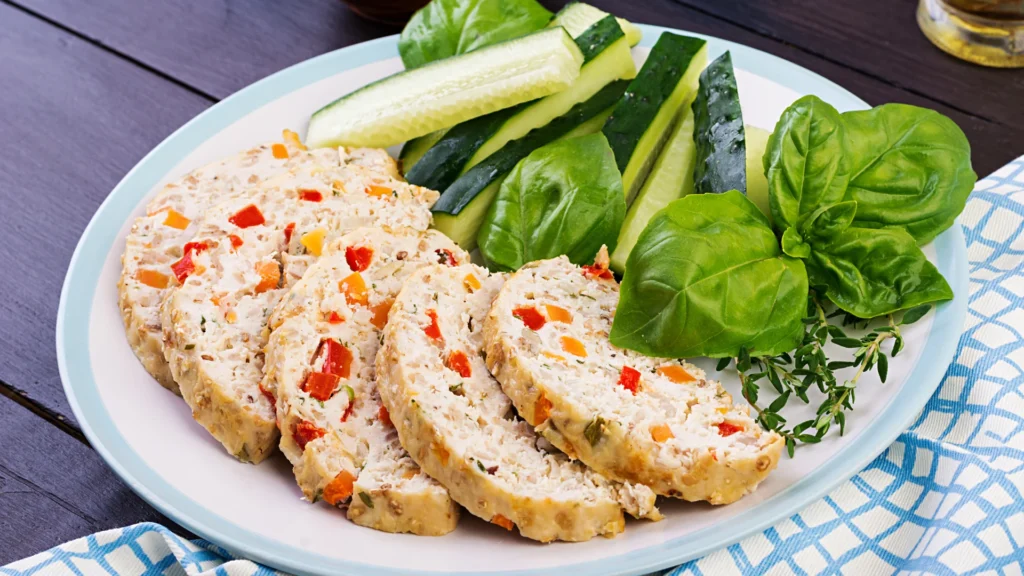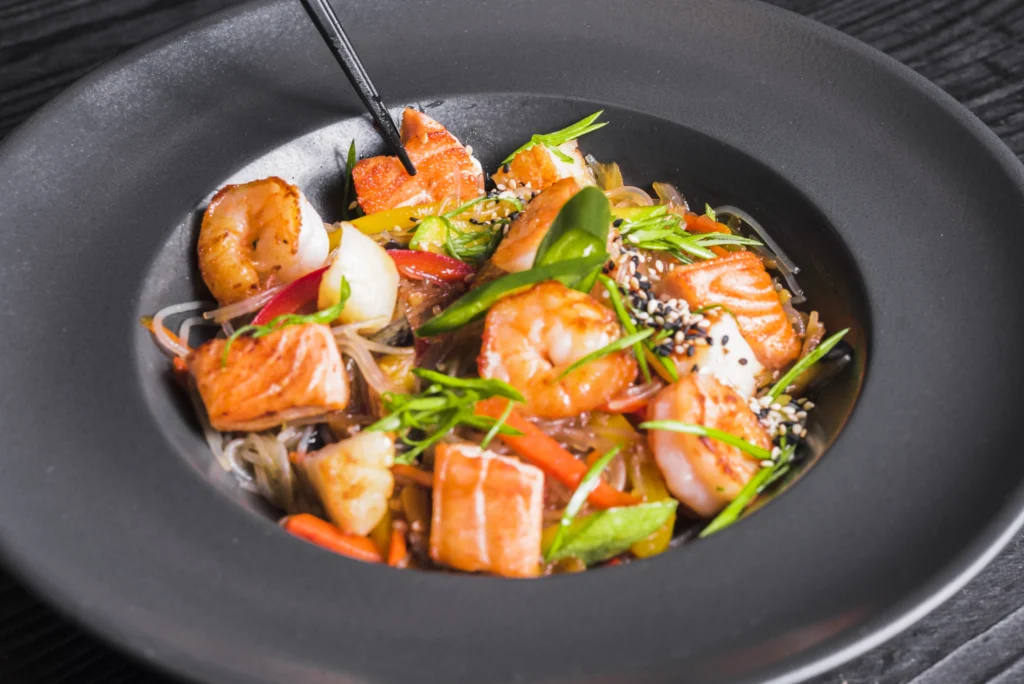(Simple Baked Salmon) Salmon is one of those ingredients that can elevate your dinner game without much effort. Its rich flavor, flaky texture, and nutritional benefits make it a favorite for many households. Whether you’re looking to prepare a healthy weekday meal or a sophisticated dish for a weekend gathering, baking salmon is one of the easiest and most foolproof methods. If you’re wondering how to bake salmon to perfection, you’ve come to the right place.
In this guide, we’ll walk you through 7 foolproof step-by-step techniques that will help you achieve perfect results every time you bake salmon. From choosing the right salmon fillet to seasoning and cooking, we’ll cover all the essential details to ensure your baked salmon is juicy, flavorful, and simply irresistible. Let’s dive in!
Table of Contents
Why Baked Salmon is a Winner
Before we get started with the baking process, it’s essential to understand why baked salmon is such a great choice for any meal:
- Nutritional Powerhouse: Salmon is packed with omega-3 fatty acids, which are known for supporting heart health and brain function. It’s also a great source of protein and other essential vitamins like B6 and B12.
- Easy to Prepare: Baking salmon requires minimal ingredients and can be done in one pan, making cleanup a breeze.
- Versatile: Baked salmon pairs well with a wide variety of side dishes—from roasted vegetables to grains or fresh salads.
- Delicious Flavors: The natural richness of salmon blends well with a variety of seasonings and herbs, making it a flavorful meal option.
Selecting the Best Salmon for Baking
Before you begin baking, selecting the right salmon fillet is crucial. Here’s what you need to keep in mind:
- Types of Salmon: There are two primary types of salmon you’ll typically find—Atlantic and Pacific. Both are delicious, but wild-caught Pacific salmon tends to have a more robust flavor.
- Fresh vs. Frozen: While fresh salmon is always ideal, you can get great results with frozen salmon if you buy high-quality fillets. Just make sure it’s been thawed properly before cooking.
- Color and Texture: Choose salmon fillets with vibrant color (usually bright orange or reddish-pink) and firm texture. Avoid salmon with a mushy feel or dull color.
Essential Tools and Equipment for Baking Salmon
You don’t need a fully stocked kitchen to bake perfect salmon, but a few tools will make the process much smoother:
- A Baking Sheet: Use a sturdy baking sheet lined with parchment paper to catch any drips and prevent sticking.
- Parchment Paper: This helps avoid sticking and makes cleanup a breeze.
- Cooking Thermometer: A thermometer is useful to ensure your salmon is cooked to perfection without overcooking.
- Brush or Spoon: For evenly distributing olive oil, marinades, or glazes.
Simple Baked Salmon: A Foolproof Step-by-Step Guide
Now that you have your ingredients and tools ready, let’s get into the step-by-step guide to baking salmon.
Step 1: Preparing the Salmon
Start by ensuring your salmon fillets are clean and dry. Rinse the fillets under cold water, pat them dry with paper towels, and check for any pin bones that might still be present.
Step 2: Seasoning the Salmon
The magic happens in how you season the salmon. Simple seasonings work beautifully:
- Salt and Pepper: A generous sprinkle of sea salt and freshly ground black pepper is all you need for a basic, delicious flavor.
- Lemon: The acidity of lemon brightens the taste of the salmon.
- Olive Oil: Drizzle olive oil over the fillets to help keep them moist and to enhance the flavor.
- Optional Herbs: Add chopped fresh herbs like dill, thyme, or parsley for an extra burst of flavor.
Step 3: Prepping the Baking Sheet
Line your baking sheet with parchment paper or lightly grease it with cooking spray to ensure the salmon won’t stick. This also makes cleanup easier.
Step 4: Placing the Salmon
Place your salmon fillets skin-side down on the baking sheet. Spacing them out slightly helps with even cooking.
Step 5: Baking Time and Temperature
Preheat your oven to 375°F (190°C). Bake the salmon for 12-15 minutes, depending on the thickness of your fillets. Salmon is done when the internal temperature reaches 145°F (63°C) and flakes easily with a fork.
Step 6: Checking for Doneness
A key indicator of perfectly baked salmon is when it easily flakes apart using a fork. Insert a thermometer into the thickest part of the fillet to ensure it reaches 145°F (63°C).
Step 7: Serving and Garnishing
Once your salmon is perfectly baked, let it rest for a few minutes before serving. You can serve it with simple sides like roasted vegetables, quinoa, or a fresh salad. Drizzle with a little more olive oil, squeeze of lemon, or add a sprinkle of herbs for garnish.
Delicious Variations of Baked Salmon
One of the best things about baked salmon is how easily you can customize it. Here are a few tasty variations to try:
- Lemon Garlic Baked Salmon: Combine lemon juice, minced garlic, olive oil, and herbs for a bright and tangy flavor.
- Honey Mustard Baked Salmon: Mix honey, Dijon mustard, and olive oil for a slightly sweet and savory twist.
- Mediterranean Baked Salmon: Add oregano, rosemary, cherry tomatoes, and olives for a rich Mediterranean flair.
- Teriyaki Baked Salmon: A sweet soy-based glaze gives this variation a unique Asian-inspired taste.
- Spicy Cajun Baked Salmon: Sprinkle with Cajun seasoning for a spicy, bold kick.
Tips and Tricks for Perfect Simple Baked Salmon Every Time
To ensure your baked salmon comes out perfectly each time, here are some expert tips:
- Thaw Frozen Salmon Properly: If using frozen salmon, defrost it slowly in the refrigerator to retain moisture.
- Let the Salmon Rest: Resting the cooked salmon for a few minutes allows the juices to redistribute, making it juicier.
- Use the Right Oil: For crispier skin, use avocado oil or vegetable oil. Olive oil is great for a more subtle flavor.
- Avoid Overcrowding: Space the fillets slightly apart on the baking sheet for even cooking and better browning.
Common Mistakes to Avoid When Baking Salmon
Even with such a simple cooking method, there are some common pitfalls to watch out for:
- Overcooking: Salmon cooks fast! Keep an eye on your cooking time to prevent dryness.
- Wrong Baking Temperature: Baking at too high a temperature can dry out your salmon. Keep it at 375°F for juicier results.
- Poor Quality Salmon: Always choose fresh or high-quality salmon for better results.
Conclusion
Baking salmon is one of the simplest ways to prepare this nutritious and delicious fish. With the 7 foolproof steps outlined above, you now have the tools to bake perfect salmon every time. From seasoning to cooking, every detail matters—and you’ve got it all covered. Whether you’re making it for a quick weeknight dinner or a special gathering, baked salmon will never disappoint.
So why wait? Try baking salmon tonight and elevate your next meal with this flavorful, healthy choice!
FAQ Section of Simple Baked Salmon
- What temperature should I bake salmon?
- How long should I bake salmon fillets?
- Can I marinate the salmon before baking?
- How do I store leftover baked salmon?

